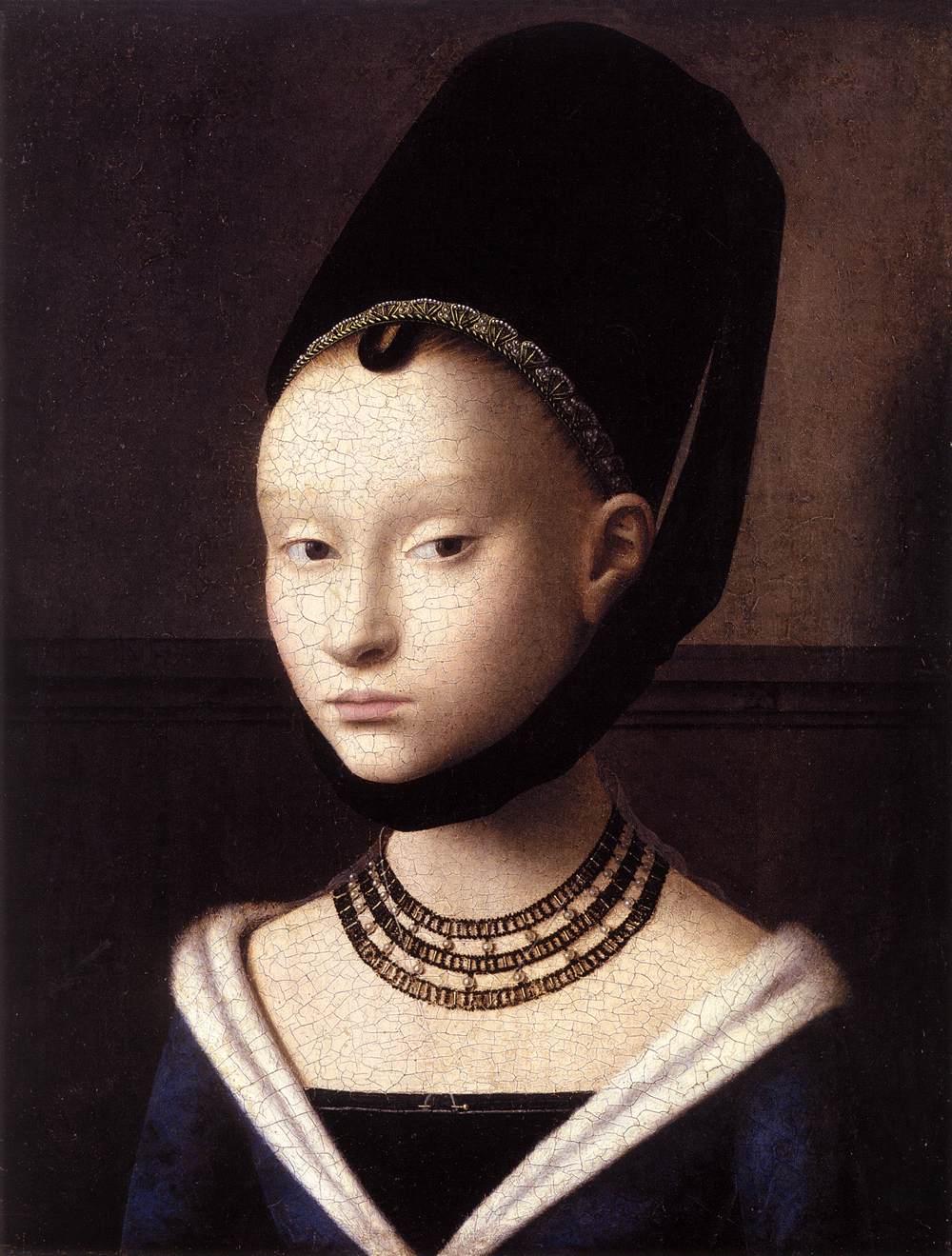This weekend is out local baronial investiture and I am quite excited about it. The couple who are being invested as out baron and baroness are really wonderful people, which is a big help, and the theme of the event is the Manesse Codex, which makes me happy as I've been wanting to do a gown from that period for a long time. Mostly so I can make a silly hat. Because really, it's all about the silly hats. Somewhere along the line I lost my gorram mind and decided to hand-sew the whole thing, so this project has taken longer than I would have liked but it's finally at least wearable. I still have some seam finishing to do on the undergown, but at least I can get out the door on Saturday without getting around to that if it doesn't happen.
Pictures of the gown itself will come later, but for now, the silly hat! The pie-plate fillet or whatever you want to call it, is the (in my opinion) quintessential Manesse hat. It's also fairly mysterious. Some people have constructed these like coffee filters, some people just box-pleat a ruffle on the top of a band of linen, neither version looks anything like the fluted pie-edge you see in the illustrations. I've also seen a range of thing used as understructure for the hat, from nothing at all, to lots of folded linen, to buckram, all of which have their issues.
Not being even remotely satisfied with any of the reconstructions of the hat I have seen, I decided to toss them all aside and start from scratch. The main points I took into consideration were as follows:
- the hat is a smooth, slightly flaring band that sits on the head with a ruffled thing around the edge
- the band is stiff but does not appear to be terribly bulky
- hats work better if they are light and the bands are not bulky. Whatever material is used to keep this stiff should be as thin as possible, and flexible so as to conform to the head comfortable and not give one a headache while at the same time being strong around to support a veil as seen in some of the illustrations
- the whole affair appears to be open at the top, but this could be wrong as suggested by at least one funeral effigy (don't have the source at the moment but I will find it and post it later)
- materials available in period should be used as much as possible - i.e. natural fibers and natural stiffening agents. They did have sizing afterall, so why not use it?
- this whole thing looks an awful lot like a goffered viel, so using some of what we know about those from Isis's research might be a good idea
- Needs to be easy to maintain in to actual real-world conditions
From this, it became clear very quickly that using layers of folded linen or nothing more than sized linen would not work at all, as the hat would be too bulky or too fragile. Also, buckram seemed like an unsuitable option for the interior frame as the glues and sizings used to keep it stiff are too stiff and the edges really need to be wired in order of the thing to maintain it's shape. So I opted to use felt. Heavily fulled wool was certainly available in period, there are many contemporary illustrations of hats that appear to be made out of stiffly shaped wool, and it takes sizing well, so this seemed reasonable. All I had on had was craft felt, so I didn't need to size anything but a simple fax seed or gelatin sizing would have worked and both were available in period. A glue would also work well.
The nice thing about the felt/wool option is that the whole frame of the hat is very lightweight, thin and flexible. Plus you can steam it or press it if it gets bent out of shape, making the hat fairly resilient to actual wear. I'm not sure about washing it if it gets really dirty, but we will cross that bridge when we get there. I think spot-cleaning will work for everything except Pennsic levels of gross.
I should have taken a picture of this step, since this is where what I did differs from what I've seen most people do. Rather than just leave the box pleated edge sticking straight up, I stitched the bottom part of the pleat down to the front edge of the hat, about 1/4 of an inch down. This is what gives the fun icing-like effect to the pleats.
When wearing the hat, you wear a chin-band, which not only keeps your hair in place but keeps the hat on remarkably well without any extra attachments needed. I had initially thought I would need to pin the hat to the chin band at the sides, but I was able to run around the house, picking up the dogs and doing all kinds of things without anything slipping at all. My hair is exceptionally slippery so I think people with easier to manage hair would have no problem with this coming off at all.
I will post pictures of the whole outfit on me after the weekend!











